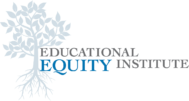In her book, The Dark Side of Light Chasers, Debbie Ford talks about how we consciously or unconsciously hide different aspects of ourselves. Ultimately we reject them because we’re afraid to recognize their existence. Often times, this means refusing to look at things within ourselves that we wish weren’t real. We just push them away in hopes that no one will notice.
I’ve been pondering this book and how it relates to our country these past few days. So much darkness. Right now, I think that our country is struggling to face some pretty hard truths about itself. One of them being racism. It’s easy to blame and judge others, and there’s plenty of that going around these days. However, this is just denial and deflection in disguise. We tend to look away from our darkest truths because it’s too painful to admit that they exist.
Learning about implicit bias and admitting that it exists within us is hard. It means admitting that implicit bias is a part of ourselves that we wish would just go away. But all of our brains harbor unconscious attitudes and beliefs about others. Going deep into our subconscious and reflecting on how these thoughts directly affect the lives of other people also means admitting that we do, in fact, have a race problem in this country.
It’s real. It exists, and Black people live in that reality every day.
There is a large amount of research showing how implicit bias effects real life settings. Researchers have found that as pediatricians’ implicit biases increase, they are more likely to prescribe painkillers for patients who are White as opposed to Black. In the criminal justice system, individuals with more Afrocentric features such as dark skin, a wide nose, and full lips have received longer sentences than their less Afrocentrically featured peers.
Black children are 3 to 4 times more likely to be referred to the office, suspended, or expelled than White children who have committed a similar or lesser offense. Black children also are disproportionality over-identified and mislabeled as needing special education even when most of these students are found to be without special needs.
The catch with looking away is the problems we’re seeing these days—denial, lack of kindness, judging, aren’t going away. They’re actually going to keep getting worse. Facing the reality about implicit bias and race is hard. It means looking deeply at ourselves and understanding our roles in the problems we are facing today.
Admitting Implicit Bias
Admitting that we have implicit bias is tough because we White people don’t want to admit that we’re part of the problem. We like to say that we don’t see color (which is like saying that you can’t see my glasses). The important thing to understand though is that having implicit bias doesn’t mean that we are racist.
Implicit biases often don’t align with our declared beliefs because they’re unconscious and have been shaped by our life experiences. Life experiences as such, where we live, who we surround ourselves with, what we see on TV, read in the news, and our exposure to people who are different from ourselves. One thing that helps us unlearn implicit bias is to catch ourselves and stop the unconscious belief when it’s activated.
Research indicates that implicit bias is most likely activated when people feel stressed and need to make a quick decision. Educators, does this sound familiar (e.g., managing behaviors, dealing with transitions)?
Being vigilant and identifying when our biases are activated will lead to greater self-awareness, being more present in the future. As a result, we are less likely to rely on them in the future. However, the biggest and most important thing to do is to have experiences with people who are not like ourselves.
This is hard though, right?
Over the past two decades, our communities are the most segregated than in previous years. We spend most of our time interacting with the people who are in close proximity to us. Such places include, our neighborhoods where we live, our churches, and our schools. It’s hard to push ourselves through the discomfort and put ourselves in different settings with people who are not like us. Fear can get in the way. Life gets in the way.
These situations, though, make a huge difference in understanding the unique experiences of others. Schools can address implicit bias by talking about racism within our educational system. They can discuss how the history of our country influences the practices that we use today. These types of conversations can be scary and hard, but also incredibly healing.
In Conclusion
For educators, we need to develop an in-depth understanding about how our implicit biases influence our interactions with specific students. Also, understand the types of educational practices we use in the classroom, and how we discipline individual children.
Addressing implicit bias will not solve the equity issues within our educational system. However, it is the key component that needs to be addressed.

